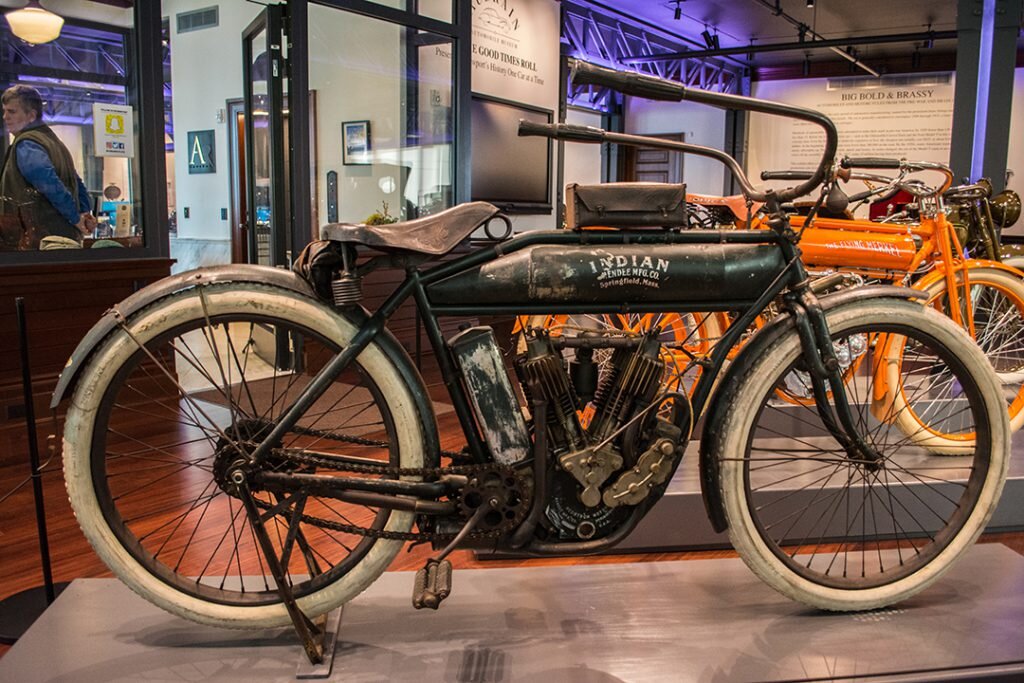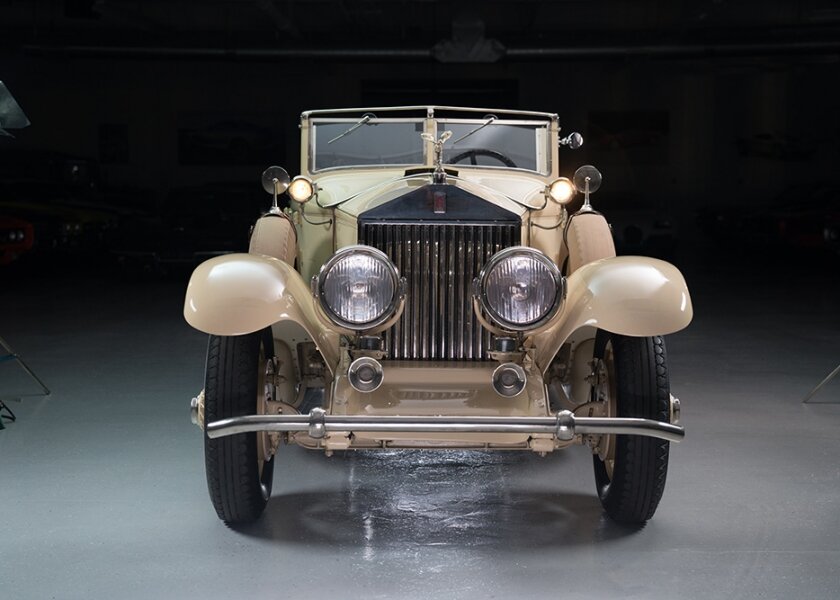1909 Indian Motorcycle
Specifications
Built by: 38 cu in
Drivetrain: Twin-cylinder
Displacement: 5hp
Transmission: Single speed
A Little History
This 1909 Indian Twin, aside from the tires, is unrestored and with all original parts, including Indian’s reliable four-horsepower, two-cylinder engine and factory-original green paint. One might initially think of this as a motorized bicycle, but in fact it is considered a motorcycle, with the pedal cranks only used to help jump start the engine.
The “Indian Motorcycle Co.” was originally founded as the Hendee Manufacturing Company by George M. Hendee of Springfield, Massachusetts in 1897 to manufacture bicycles, later branded as “Indian” from 1898 onwards as it gave better product recognition in export markets.
PHOTO Indian Motorcycle Company co-founders George M. Hendee (left) and Carl Oscar Hedström (right) (www.indianmotorcycle.com)
With the addition of Carl Oscar Hedström in 1900, the company designed a motorcycle with a 1.75bhp single-cylinder engine and the first Indian motorcycles were sold to the public in 1902. In 1904 the company introduced the deep red color that would become Indian’s trademark.
The Design
In 1909, Indian Motorcycle pioneered the “loop frame” that was more similar to racing motorcycle design than the previous “diamond frame” that originated with bicycles. Indian also introduced several advancements on its 1910 models, including a leaf-spring front fork and an automatic oil pump. Some models also had a 2-speed transmission, floorboards, starter hand cranks, and the Indian Motorcycle script logo.
PHOTO Two Indian motorcycle advertisements, circa 1911
Did You Know?
One of Indian’s most famed riders was Erwin “Cannonball” Baker, who set numerous long-distance records. In 1914, he rode an Indian across the United States, from San Diego to New York, in a record 11 days, 12 hours and 10 minutes.




















